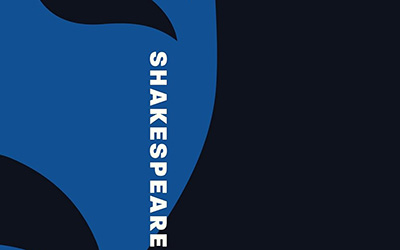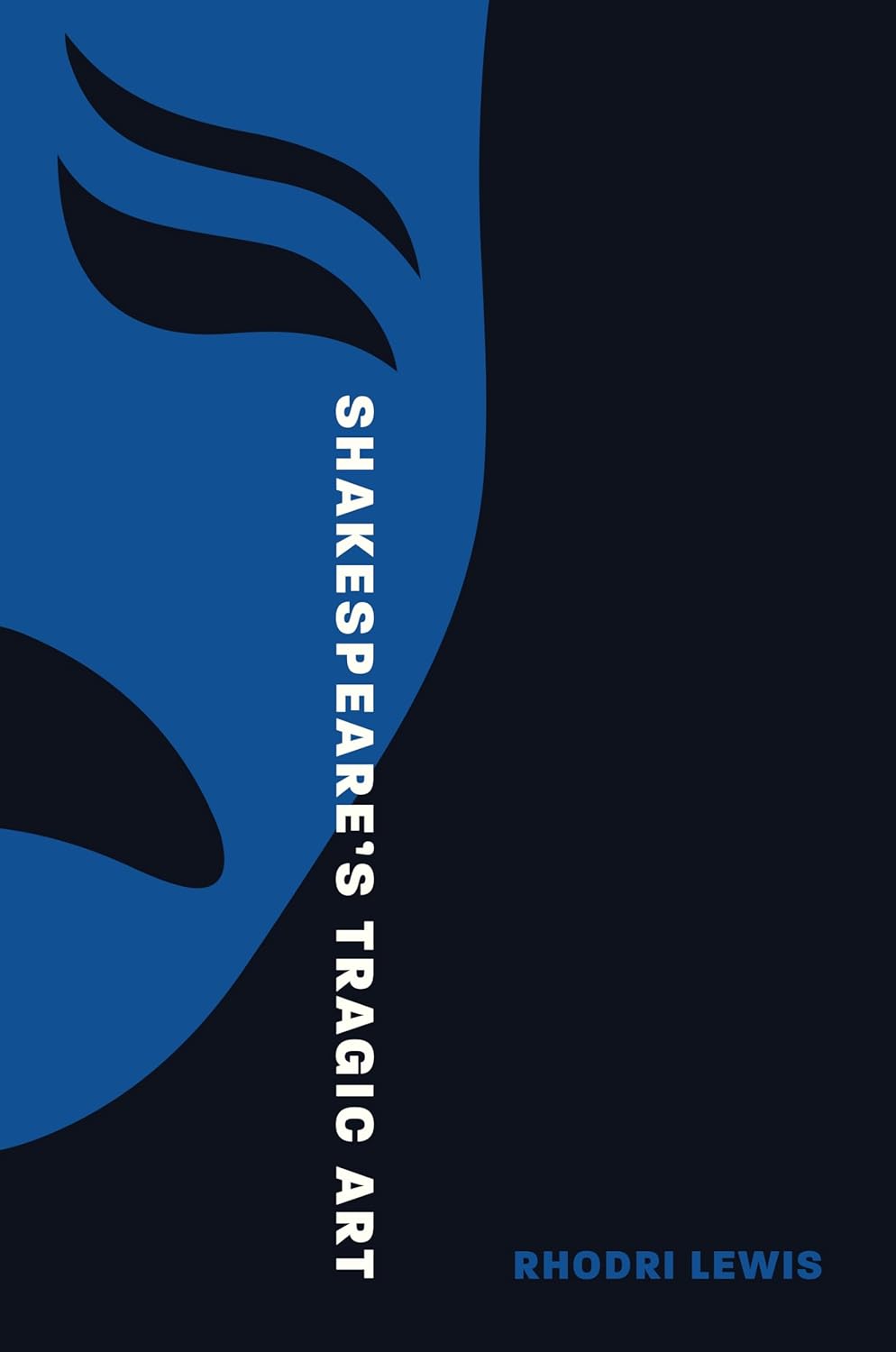
- Free Article: No
- Contents Category: Literary Studies
- Review Article: Yes
- Article Title: Never-settled notions
- Article Subtitle: Tragedy as historically contingent
- Online Only: No
- Custom Highlight Text:
In 1588, with England facing the threat of Spanish invasion, Elizabeth I visited her troops assembled at Tilbury to deliver some rousing words: ‘I know I have the body of a weak and feeble woman; but I have the heart and stomach of a king, and of a king of England too.’ This assertion, the idea that the body politic was eternal and existed in a sacred realm beyond historical time, was ideally suited to a moment of national crisis. But rhetorical force notwithstanding, Elizabeth was propounding a fiction. In Shakespeare’s Tragic Art, Rhodri Lewis explores how William Shakespeare was able to use the tragic form to interrogate those ‘fictions of order, stability, and perpetuity’ that humans deploy in their desire to make sense of a random universe. Beginning with Titus Andronicus and ending with Coriolanus, Lewis shows how each play is a response to a particular set of aesthetic challenges. Shakespeare’s motivations lay in exploring the possibilities of the tragic genre. Through plays as various as Romeo and Juliet, Hamlet, and King Lear, he explored ‘never-settled notions’ of what tragedy could achieve.
- Featured Image (400px * 250px):

- Alt Tag (Featured Image): David Rowland reviews ‘Shakespeare’s Tragic Art’ by Rhodri Lewis
- Book 1 Title: Shakespeare’s Tragic Art
- Book 1 Biblio: Princeton University Press, US$39.95 hb, 392 pp
- Book 1 Cover Small (400 x 600):

- Book 1 Cover (800 x 1200):

- Book 1 Readings Link: https://www.readings.com.au/product/9780691246697/shakespeares-tragic-art--rhodri-lewis--2024--9780691246697#rac:jokjjzr6ly9m
In terms of its scope and ambition, Lewis’s book has been compared to A.C. Bradley’s Shakespearean Tragedy, first published in 1904. Lewis asserts that ‘many features of Shakespeare’s tragic plays have passed unremarked’, partly because ideas about what constitutes ‘the tragic’ are historically contingent and always shifting. The corrective offered by Lewis is to recognise the extent to which Shakespeare’s voice emerged from ‘the cultural, social, and intellectual orthodoxies’ of his own historical moment and to understand the tragedies as coherent responses.
A version of humanism that was underpinned by a revival of classical thought and literature dominated the cultural life of Renaissance England. In the theatre, understandings gleaned from classically inherited models of tragedy had a profound influence on the work of playwrights such as Shakespeare. Lewis engages with these understandings to illuminate the ways that Shakespeare’s tragedies are ‘preoccupied with the heritage of ancient Rome’.
Accordingly, a play like Antony and Cleopatra ‘does not depict a world in which there is a collision between Roman and Egyptian mores, or systems of belief’. Instead, Lewis shows that it depicts a collision of a different sort: a vying between Mark Antony and Octavius Caesar over an Egypt that, to their Roman eyes, is almost invisible. Egypt, insofar as it does exist for these rulers, is rendered recognisable only through language. The problem is that the characters deploy representations drawn from competing brands of humanism that cannot be reconciled. Some around Antony seem to glean this, and know better than to trust in Antony’s words, or even their own. Enobarbus, who claims that Cleopatra’s appearance ‘beggared all description’, has the right idea.
Shakespeare, in drawing on the kinds of representation that humanism made possible, appears to have understood the truth of the maxim: ‘Write what you know.’ While he had no direct experience of the Roman world, Shakespeare knew its rhetorical traditions – his grammar school education and his years as an actor and playwright ensured that. More importantly, his audiences shared those traditions. If success in rhetoric depends on accommodating the audience’s frame of reference, Lewis demonstrates that this enabled Shakespeare to render convincing representations of settings remote in time and place.
The plot of Othello, which turns on an almost dizzying array of fictions, is a prime example of Shakespeare’s tendency to highlight the representations from which his drama is constructed. In this play, Iago exploits those around him for their willingness to fall for fictions, and his linguistic assuredness condemns them to the roles he has devised. But Iago is ultimately deprived of a role for himself. Consequently, where Coleridge famously ascribed ‘motiveless malignity’, Lewis sees ‘humanist selfhood at its most decayed’. When his villainy is exposed, Iago merely says: ‘From this time forth I never will speak word.’ Despite performing persona after persona, Iago has no means by which to define himself.
Dramatic worlds are dependent on acts of representation, and Philip Sidney’s An Apology for Poetry, a work of literary theory composed and circulated in manuscript in the 1580s, foregrounds the author’s dismay at how the classical conventions articulated in Aristotle’s Poetics were being transformed. But the innovations of Christopher Marlowe and Thomas Kyd, Shakespeare’s immediate predecessors in England’s emerging vernacular art form, would establish an unstoppable momentum. As Lewis observes, for the kind of tragic art that Shakespeare wanted to create, ‘conventionally received models of drama were themselves a part of the problem’ – just one more orthodoxy that might be questioned and transformed. Shakespeare’s tragic drama was therefore concerned with the extent to which doctrines and belief systems could be relied upon. In Macbeth, the protagonist’s actions and the explanations through which he attempts to justify them create an unbridgeable gap. It is ‘Shakespeare’s starkest engagement with the theatrum mundi – the notion that “all the world’s a stage”’. For Lewis, it is the play in which the ideology of sacred kingship is exposed as a fiction.
As with the other plays discussed in this volume, Lewis’s reading of Macbeth is informed and perceptive, and the overlay between the fictional and the historical is convincing, so much so that it is hard not to sense another aspect of the playwright’s world intruding. In all his representations, Shakespeare had to exercise caution. Playing companies depended on a system of patronage and, in an authoritarian age, it was prudent not to alienate the noble and aristocratic. But the genre of dramatic tragedy allowed the artist some latitude. When it came to the doctrine of the king’s two bodies – politic and natural – Elizabeth could have her fiction. Macbeth would not be so lucky.


Comments powered by CComment